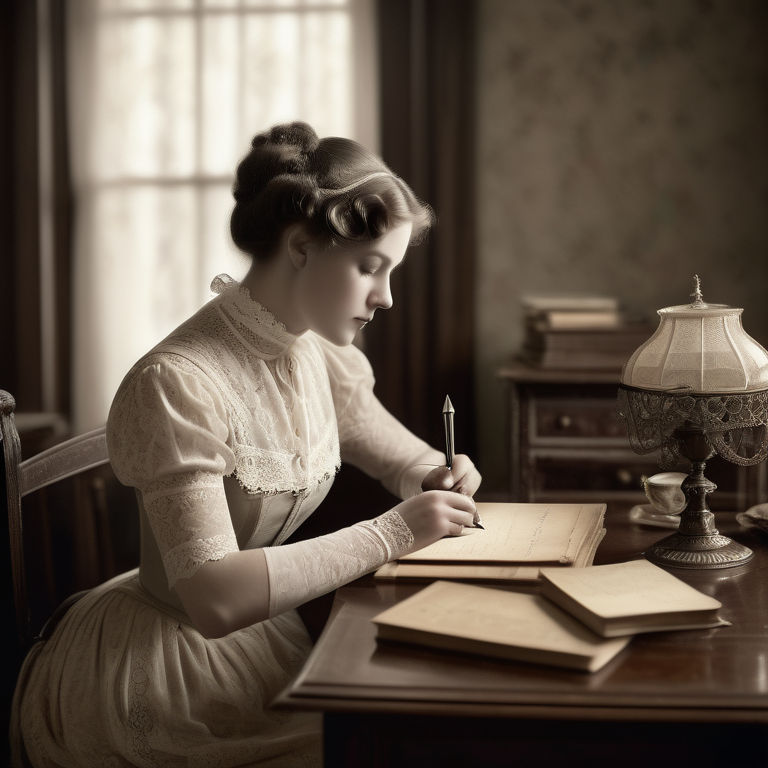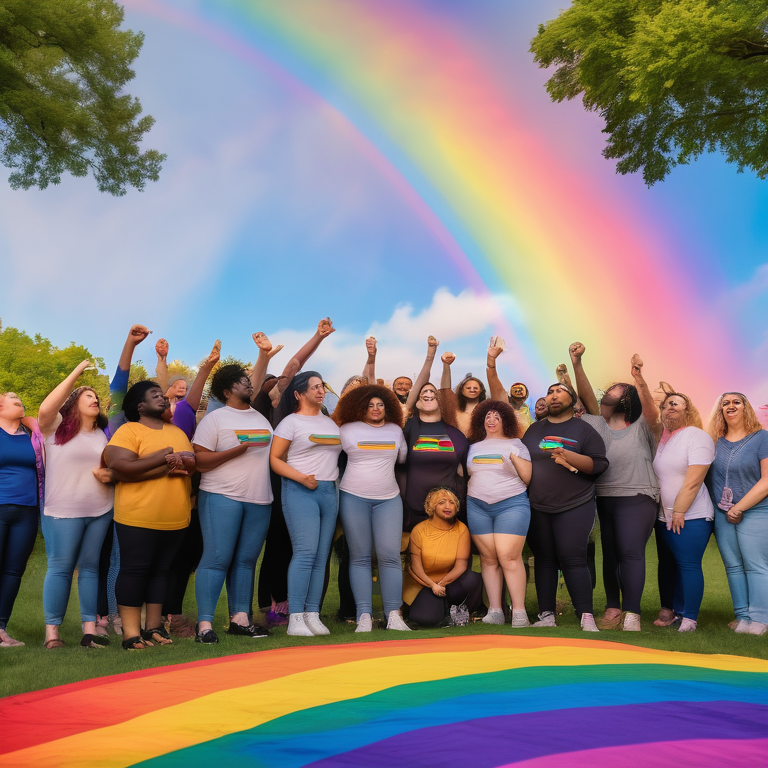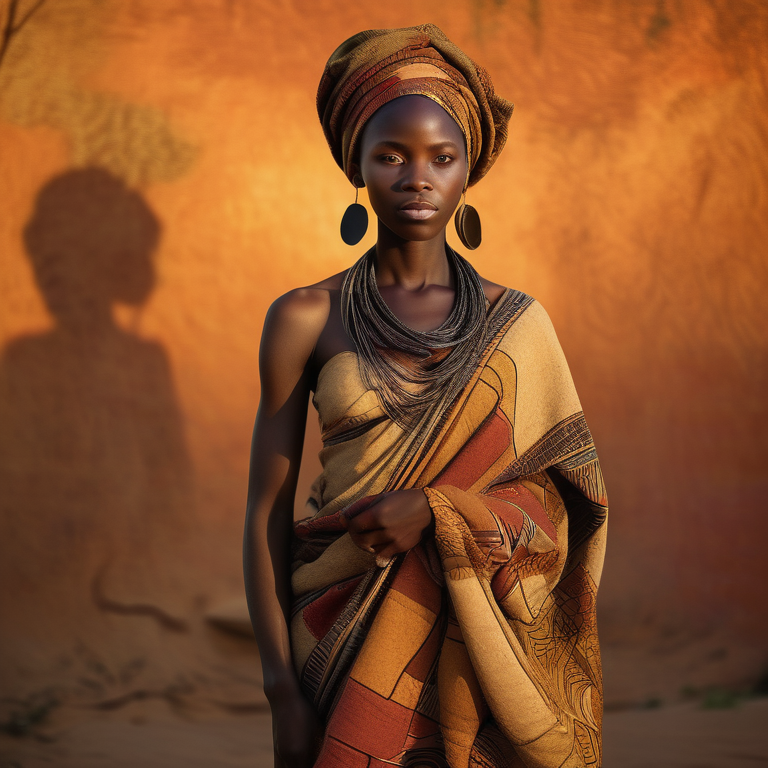Women’s Sexuality in the Early 20th Century

Key Highlights
- The social construct of women’s sexuality in the early 1900s was heavily influenced by the suffrage movement and the impact of World War I on gender norms.
- The medicalization of women’s sexuality during this time period was shaped by Freud’s theories and the introduction of birth control, which gave women more autonomy over their bodies.
- The legal landscape surrounding women’s sexuality included laws governing morality and decency, as well as the fight for reproductive rights.
- Cultural representations of female sexuality in literature and cinema reflected the changing perceptions of women’s roles and desires.
- The feminist movements of the early 20th century played a significant role in advocating for sexual liberation and challenging societal norms.
- Sexual education and awareness during this time period focused on early sex education movements and the public discourse surrounding taboo topics.
Introduction
Women’s sexuality in the early 20th century was influenced by a variety of factors, including the social construct of the time, the medicalization of women’s bodies, the legal landscape, cultural representations, and the influence of feminist movements. This blog will explore these different aspects in detail to provide a comprehensive understanding of women’s sexuality during this era.
During the early 1900s, women’s sexuality was often seen through the lens of societal expectations and gender roles. The suffrage movement, which fought for women’s right to vote, played a significant role in challenging these expectations and reshaping societal views on women’s sexuality. Additionally, the impact of World War I on gender norms also had a profound effect on women’s roles and desires.
The medicalization of women’s sexuality during this time period was influenced by Sigmund Freud’s theories, which explored the sexual development of individuals. Freud’s ideas about female sexuality and the importance of the unconscious mind had a lasting impact on how women’s desires and experiences were understood and treated, particularly in terms of reproduction. The introduction of birth control also played a crucial role in giving women more autonomy over their bodies and sexual choices.
The legal landscape surrounding women’s sexuality varied across different regions and countries. Laws governing morality and decency often imposed strict standards on women’s behavior, particularly in regards to sexuality. However, the fight for reproductive rights also emerged during this time, as women pushed for the right to make decisions about their own bodies and reproductive choices.
Cultural representations of female sexuality in literature and cinema reflected the changing perceptions of women’s roles and desires. The “New Woman” emerged as a prominent figure in literature, challenging traditional notions of femininity and advocating for women’s sexual liberation. Cinema also played a significant role in shaping societal perceptions of women’s sexuality, with changing portrayals and narratives that reflected the shifting social dynamics of the time.
Feminist movements of the early 20th century played a crucial role in advocating for sexual liberation and challenging societal norms. First-wave feminism, in particular, fought for women’s right to control their own bodies and pursue sexual pleasure without shame or judgment. The intersection of race, class, and sexuality also became an important aspect of feminist discourse, as women from different backgrounds and experiences sought to address the unique challenges they faced in relation to their sexuality in the new millennium.
Sexual education and awareness during this time period focused on early sex education movements and the public discourse surrounding taboo topics. The understanding of sexual health and pleasure was still evolving, and efforts were made to provide accurate information and promote open discussions about sexuality. However, societal taboos and conservative attitudes often limited the extent of these efforts and the accessibility of information, particularly when it came to discussing sexual orientation.
In conclusion, women’s sexuality in the early 20th century was shaped by a complex interplay of social constructs, medicalization, legal landscapes, cultural representations, and feminist movements. Understanding the historical context and the various factors that influenced women’s sexuality during this era, particularly in light of views that gained currency during the late 19th century, is crucial for appreciating the progress that has been made and the ongoing challenges that still exist today.
The Social Construct of Women’s Sexuality in the Early 1900s
The social construct of women’s sexuality in the early 1900s was heavily influenced by societal expectations and gender roles. In the United Kingdom and other countries during this time period, women’s behavior and desires were often dictated by strict moral standards and societal norms. Women were expected to conform to traditional notions of femininity and modesty, and any deviation from these expectations was often met with judgment and condemnation.
The role of the suffrage movement
The suffrage movement, which fought for women’s right to vote, played a significant role in challenging societal views on women’s sexuality in the early 1900s. The movement advocated for women’s autonomy and equal rights, which extended to their sexual desires and choices. By challenging traditional gender roles and advocating for women’s independence, the suffrage movement paved the way for a more open and progressive understanding of women’s sexuality. The fight for women’s suffrage also created a platform for broader discussions on women’s rights, including reproductive rights and sexual liberation. The suffrage movement empowered women to assert their agency and challenge societal expectations, creating a foundation for future feminist movements and advancements in women’s sexuality.
The impact of World War I on gender norms
World War I had a profound impact on gender norms and societal expectations, including those related to women’s sexuality. The war created significant disruptions in traditional gender roles and provided new opportunities for women to enter the workforce and take on roles traditionally held by men. This shift in gender dynamics challenged traditional notions of femininity and created space for women to explore their own desires and sexual autonomy. Additionally, the war also created a sense of urgency and a desire for freedom and independence, which extended to women’s desires and sexual expression. The impact of World War I on women’s sexuality can be seen in the following ways:
- Women’s increased participation in the workforce and their contribution to the war effort challenged traditional gender roles and expectations.
- The war created a sense of urgency and a desire for freedom, which extended to women’s desires and sexual expression.
- The war disrupted traditional gender dynamics and created opportunities for women to take on new roles and assert their agency.
- The experiences of women during the war, including their participation in the workforce and their exposure to new ideas and perspectives, contributed to a shift in societal attitudes towards women’s sexuality.
The Medicalization of Women’s Sexuality
The medicalization of women’s sexuality in the early 20th century was influenced by the theories of Sigmund Freud and the emerging field of sexology. Freud’s theories on psychoanalysis and sexual development shaped the understanding of female sexuality at the time. His ideas about the unconscious mind, sexual desires, and the role of childhood experiences in shaping adult sexual behavior had a significant impact on how women’s sexual desires and experiences were understood and treated. The medicalization of female sexuality also paved the way for the introduction of birth control, which gave women more control over their bodies and reproductive choices.
Freud’s theories and their influence
Sigmund Freud’s theories on psychoanalysis and sexual development had a profound influence on the understanding of women’s sexuality in the early 20th century. Freud’s ideas challenged traditional notions of female sexuality and explored the role of the unconscious mind, childhood experiences, and sexual desires, also known as libido, in shaping adult sexual behavior. His theories highlighted the importance of sexual development and the impact of early experiences on an individual’s sexual desires and behaviors. Freud’s theories also contributed to the medicalization of women’s sexuality, as his ideas were incorporated into the emerging field of sexology and influenced the treatment and understanding of female sexual disorders. While Freud’s theories have been criticized for their limited perspective and lack of inclusivity, they played a significant role in shaping the understanding of women’s sexuality during this time period.
Birth control and women’s autonomy
The introduction of birth control in the early 20th century had a transformative effect on women’s sexuality and their autonomy over their bodies. Prior to the availability of effective birth control methods, women had limited control over their reproductive choices and were often at the mercy of their fertility. The widespread use of birth control methods such as the contraceptive pill and barrier methods gave women the ability to plan and control their pregnancies, allowing them to make informed choices about their sexual lives and reproductive health. This newfound autonomy over their bodies empowered women to assert their desires and preferences in their sexual relationships, and to prioritize their own well-being and fulfillment. The availability of birth control also played a crucial role in the sexual revolution of the late 20th century, opening up new possibilities for women’s sexual liberation and freedom.
The Legal Landscape Surrounding Women’s Sexuality
The legal landscape surrounding women’s sexuality in the early 20th century was characterized by a complex web of laws and regulations that governed women’s behavior and reproductive choices. Laws related to morality and decency often imposed strict standards on women’s behavior, particularly in regards to their sexual conduct. These laws were often influenced by societal expectations and gender roles, and any deviation from these expectations was met with judgment and condemnation. The fight for reproductive rights also emerged during this time, as women pushed for the right to make decisions about their own bodies and reproductive choices, including access to birth control and safe abortion.
Laws governing morality and decency
Throughout the early 20th century, laws governing morality and decency were used to regulate women’s behavior and sexual conduct. These laws were often influenced by societal expectations and gender roles, and any deviation from these expectations was met with judgment and condemnation. Examples of laws that governed women’s morality and decency during this time include:
- Anti-obscenity laws that prohibited the distribution of explicit materials and promoted censorship of sexual content.
- Laws that criminalized behaviors deemed immoral or deviant, such as premarital sex or extramarital affairs.
- Laws that restricted women’s access to birth control and reproductive health services based on moral and religious beliefs.
- These laws reflected societal attitudes towards women’s sexuality and sought to control and regulate women’s sexual behavior. They often limited women’s autonomy and imposed strict standards of conduct based on patriarchal ideals of femininity and modesty.
The fight for reproductive rights
The fight for reproductive rights emerged in the early 20th century as women began to advocate for the right to make decisions about their own bodies and reproductive choices. This fight encompassed a range of issues, including access to birth control, safe abortion, and comprehensive sexual education. Women’s reproductive rights were often restricted by laws and regulations that sought to control and regulate women’s bodies and sexual behavior. However, activists and organizations fought tirelessly to challenge these restrictions and push for greater autonomy and choice. The fight for reproductive rights continues to this day, as women around the world advocate for access to comprehensive reproductive healthcare and the right to make informed decisions about their own bodies and reproductive futures.
Cultural Representations of Female Sexuality
Cultural representations of female sexuality in the early 20th century reflected the changing perceptions of women’s roles and desires. The emergence of the “New Woman” in literature and popular culture challenged traditional notions of femininity and advocated for women’s sexual liberation. These representations often depicted women as independent, sexually liberated individuals who pursued their own desires and challenged societal expectations. The “New Woman” became a symbol of female empowerment and a catalyst for change in societal attitudes towards women’s sexuality. Additionally, cinema played a significant role in shaping cultural representations of female sexuality, with changing portrayals and narratives that reflected the shifting social dynamics of the time.
Literature and the New Woman
Literature played a crucial role in shaping cultural representations of female sexuality in the early 20th century, particularly through the emergence of the “New Woman” as a prominent figure. The “New Woman” was a literary archetype that challenged traditional notions of femininity and advocated for women’s sexual liberation and independence. In works of literature, the “New Woman” was often depicted as an educated, independent, and sexually liberated individual who pursued her own desires and defied societal expectations. These literary representations of the “New Woman” had a profound impact on shaping societal attitudes towards women’s sexuality and challenging traditional gender roles. The “New Woman” became a symbol of female empowerment and a catalyst for change in the understanding and acceptance of women’s sexuality.
Cinema and the changing perceptions
Cinema played a significant role in shaping cultural perceptions of female sexuality in the early 20th century. The emergence of cinema as a popular form of entertainment provided a new medium through which ideas and narratives about women’s sexuality could be disseminated and consumed. Changing portrayals of women in cinema reflected the shifting social dynamics of the time and challenged traditional gender roles. From silent films to the introduction of sound and color, cinema showcased diverse representations of female sexuality. These representations ranged from the “femme fatale” to the “flapper” and depicted women who were independent, sexually liberated, and unapologetic about their desires. Cinema also played a role in challenging societal taboos and breaking down barriers surrounding discussions of women’s sexuality. A text table highlighting the changing perceptions of female sexuality in cinema during this era is provided below:
|
Film Title |
Description |
|
“Pandora’s Box” (1929) |
This German silent film features a femme fatale protagonist who challenges societal norms and explores her own desires. |
|
“It Happened One Night” (1934) |
This American romantic comedy showcases a strong-willed and independent female lead who embraces her sexuality and asserts her desires. |
|
“La Règle du Jeu” (1939) |
This French film explores themes of desire, infidelity, and societal expectations, challenging traditional notions of fidelity and sexual morality. |
|
“Gilda” (1946) |
This American film portrays a seductive and empowered female character who uses her sexuality as a means of asserting power and control. |
|
“Breathless” (1960) |
This French New Wave film challenges traditional gender roles and explores themes of sexual liberation and desire. |
These films and others like them contributed to the changing perceptions of female sexuality in the early 20th century, paving the way for more diverse and nuanced representations of women’s desires and experiences.
The Influence of Feminist Movements on Sexuality
Feminist movements of the early 20th century played a significant role in advocating for sexual liberation and challenging societal norms surrounding women’s sexuality. These movements fought for women’s right to control their own bodies and pursue sexual pleasure without shame or judgment. First-wave feminism, in particular, focused on issues of reproductive rights, including access to birth control and safe abortion. The intersection of race, class, and sexuality also became an important aspect of feminist discourse, as women from different backgrounds and experiences sought to address the unique challenges they faced in relation to their sexuality. The influence of feminist movements on women’s sexuality continues to be felt today, as ongoing efforts push for greater inclusivity, representation, and acceptance of diverse sexual identities and desires.
First-wave feminism and sexual liberation
First-wave feminism, which emerged in the early 20th century, played a crucial role in advocating for sexual liberation and challenging societal norms surrounding women’s sexuality. This wave of feminism focused on issues of reproductive rights, including access to birth control and safe abortion. Activists and organizations fought tirelessly to challenge restrictive laws and regulations that sought to control and regulate women’s bodies and sexual behavior. The fight for reproductive rights and sexual liberation became intertwined with broader discussions on gender equality and women’s autonomy. The efforts of first-wave feminists paved the way for future advancements in women’s sexuality and laid the foundation for ongoing discussions and activism surrounding sexual rights and autonomy. While the fight for sexual liberation and gender equality continues to this day, first-wave feminism made significant strides in challenging traditional gender roles and advocating for women’s right to control their own bodies and desires.
The intersection of race, class, and sexuality
The feminist movements of the early 20th century also highlighted the importance of recognizing the intersection of race, class, and sexuality in understanding women’s experiences and challenges. Women from different racial and socioeconomic backgrounds faced unique barriers and discrimination in relation to their sexuality. The experiences of women of color and women from marginalized communities were often overlooked or marginalized within mainstream feminist discourse. Intersectional feminism emerged as a response to these gaps and sought to address the complex interplay of race, class, and sexuality in shaping women’s lives. This intersectional approach recognizes the interconnectedness of different forms of oppression and seeks to challenge systems of power and privilege that perpetuate inequality. The intersectionality of race, class, and sexuality is crucial for understanding the diverse experiences of women and advocating for inclusive and equitable approaches to sexuality and gender equality.
Sexual Education and Awareness
Sexual education and awareness in the early 20th century focused on early sex education movements and the public discourse surrounding taboo topics. Efforts were made to provide accurate information and promote open discussions about sexuality. However, societal taboos and conservative attitudes often limited the extent of these efforts and the accessibility of information. Early sex education movements sought to provide young people with comprehensive and evidence-based information about sexual health and pleasure. These movements aimed to empower individuals to make informed decisions and engage in safe and consensual sexual relationships. The public discourse surrounding taboo topics such as birth control, abortion, and sexual pleasure challenged societal norms and sought to break down barriers to open discussions about sexuality. These efforts laid the foundation for future advancements in sexual education and awareness, and the ongoing fight for comprehensive and inclusive sexual health education.
Early sex education movements
Early sex education movements in the early 20th century sought to provide young people with comprehensive and evidence-based information about sexual health and pleasure. These movements emerged in response to the lack of formal education on these topics and the societal taboos surrounding discussions of sexuality. Early sex education movements aimed to empower individuals to make informed decisions and engage in safe and consensual sexual relationships. They emphasized the importance of understanding one’s own body, consent, contraceptive methods, and the prevention of sexually transmitted infections. These movements challenged traditional views on sex and sexuality and sought to break down barriers to open discussions about these topics. While early sex education efforts faced significant opposition and limitations, they laid the foundation for future advancements in sexual education and awareness and contributed to the ongoing fight for comprehensive and inclusive sexual health education.
Public discourse and taboo
The public discourse surrounding topics such as birth control, abortion, and sexual pleasure challenged societal norms and sought to break down barriers to open discussions about sexuality in the early 20th century. These topics were often considered taboo, and discussions around them were met with judgment, shame, and censorship. However, activists, writers, and organizations pushed for more open and honest conversations about these issues, advocating for the right to access information and make informed decisions about one’s own body and sexual health. The public discourse surrounding taboo topics played a crucial role in challenging societal attitudes and promoting sexual liberation and autonomy. While these discussions faced significant opposition and limitations, they laid the foundation for future advancements in sexual education and awareness and contributed to the ongoing fight for comprehensive and inclusive sexual health education.
Conclusion
Women’s sexuality in the early 20th century was a complex interplay of societal, medical, legal, and cultural factors. From suffrage movements to Freud’s theories, the landscape was evolving. The era witnessed a shift in perceptions through literature, cinema, and feminist movements. As sexual education gained ground, it challenged taboos and pushed public discourse. Notable figures defied norms, reshaping narratives. Technology and media played pivotal roles in portraying women’s sexuality. Understanding this historical context sheds light on our present-day attitudes towards women’s sexuality. Share this enlightening journey on social media to spark discussions and broaden perspectives.
Frequently Asked Questions
What was considered scandalous behavior for women at the time?
Scandalous behavior for women in the early 20th century varied depending on societal expectations and cultural norms. Examples of behaviors that were considered scandalous for women at the time included:
- Engaging in premarital or extramarital affairs.
- Wearing revealing clothing or challenging traditional notions of modesty.
- Expressing sexual desires or engaging in sexual relationships outside of marriage.
- These behaviors were often met with judgment and condemnation, as they were seen as deviating from societal expectations and moral standards.
How did early 20th-century art and literature address female sexuality?
Early 20th-century art and literature addressed female sexuality by challenging traditional notions of femininity and advocating for women’s sexual liberation and independence. The emergence of the “New Woman” as a literary archetype and the portrayal of female desires and experiences in art and literature reflected changing societal attitudes towards women’s sexuality.
Were there any notable figures who challenged the norms of female sexuality?
Yes, there were notable figures in the early 20th century who challenged the norms of female sexuality. These individuals included writers, artists, and activists who advocated for women’s sexual liberation, challenged traditional gender roles, and pushed for greater autonomy and freedom in women’s sexual experiences and desires.
How did advancements in technology and media impact the portrayal of women’s sexuality during this era?
Advancements in technology and media in the early 20th century had a significant impact on the portrayal of women’s sexuality. The emergence of cinema provided a new medium through which ideas and narratives about women’s sexuality could be disseminated and consumed. Changing portrayals in film reflected the shifting social dynamics of the time and challenged traditional gender roles, paving the way for more diverse and nuanced representations of women’s desires and experiences.





